The truth is that I could teach little to a number of gurus and scholars of this technology. After all, rail transport has had regenerative braking systems for many more years than we have in the automotive world, as well as having much more legal regulation in this respect. But they wanted to have an insight into what we were doing in the automotive world.
The day was extremely interesting, especially because it gave me access to in-depth knowledge of many aspects of the automotive world that I had no in-depth knowledge of, and it helped me realise how stupid our automotive industry sometimes is when it comes to dealing with the obligations, both moral and legal, to reduce the environmental impact of our products.
The idea of this report is, on the one hand, to share some of the details and elements that I prepared for my presentation, as I know that many of you will be interested in them as general knowledge, and on the other hand, to reflect on the enormous road we still have to travel to get closer to the efficiency that we have in the railway world.
What is an ERS system
An ERS system is an energy recovery system. When a car changes its speed in any direction or direction, its amount of energy varies. When it loses speed, that energy tends to dissipate.
For more than a century, car manufacturers have ignored this dissipated energy, and wasted it. Thus, when braking, the kinetic energy of the car was converted into heat in the braking system, while the vibrations of the body relative to the road due to bumps and irregularities in the road were also converted into heat through the shock absorbers.
Think of it like this: A car starts moving at the bottom of a straight uphill slope. It spends some energy getting all the way to the top and begins a descent that eventually leaves it at the same height it was at the beginning. At that point it stops completely. In terms of energy, if everything were "perfect", to get from the starting point to the end point of that route, the car should only consume the energy needed to overcome the friction of the wheels with the asphalt and the friction of the air with the body. The rest of the energy used to accelerate the vehicle and climb the hill should be recovered when descending the hill and braking the vehicle.
Obviously, due to issues that I won't go into in depth now, related to thermodynamics, entropy and other wonderful fronts, this is literally impossible to achieve. There will always be more energy losses than those mentioned. But the important thing is to stick with the idea that much of the energy put into the vehicle to go uphill and accelerate, should be recoverable when going downhill and braking. So much so that a train with regenerative braking would be able to recover 40% of the energy provided during ascent and acceleration, so that energy would not be lost. It would be saved.
Unfortunately, the automotive reality is that, as I told you above, for a century we have been disregarding that energy recovery. Instead, manufacturers have been pouring money into improving the combustion efficiency of engines to achieve improvements of less than 5% in many cases.
A brief history of ERS systems
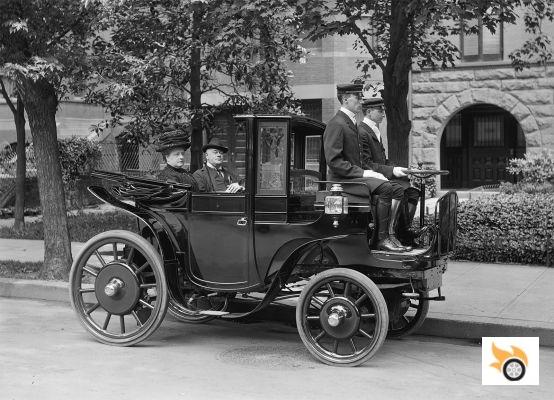
Krieger Landaulette, 1894
It's hard to believe, but the first car with an energy recovery system dates back to 1894. The Krieger Landaulette is the first commercially available car in history that was able to recover energy during braking and store it for later re-use when accelerating the vehicle.
It was an electric vehicle with two motors associated with the front wheels. Each of them had a double winding. The first coil served to power the wheels, while the second served as an electric generator, charging the vehicle's battery pack.
With a range between recharges of 100 kilometers, a top speed of 30 kilometers per hour and six horsepower maximum, the Landualette had very little to envy to other cars powered by combustion engines of the time.
The problem with the Kireger, like other examples we will see later, is that its accelerator was controlled manually, but its regenerative braking system was also controlled by a manual rotary switch that also did not allow the braking power to be modulated.
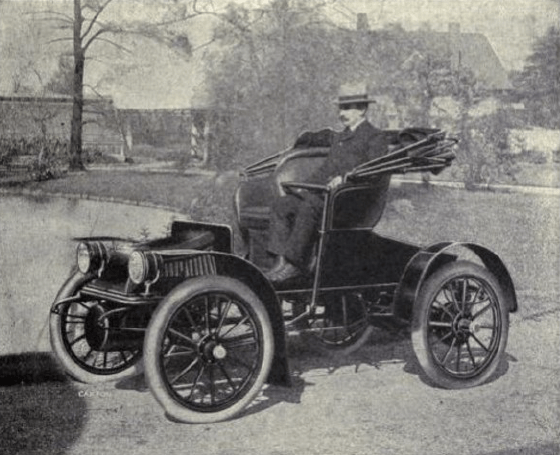
Baker Suburban Runabout, 1904
The Baker Suburban was not much more advanced. It was another electric vehicle with a longitudinal front engine and rear wheel drive, with 0.75 horsepower. The same engine acted as an electric generator for braking.
Acceleration and braking were controlled by separate manual switches, which resulted in the same problem as its more direct predecessor in terms of brake management.
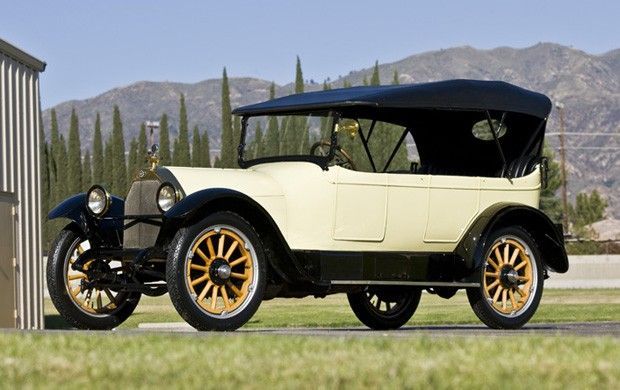
Owen Magnetic, 1915
Eleven years after the Baker, the evolution of the automobile had represented a radical leap forward. The Owen Magnetic represented a total rupture in the way of understanding the creation of automobiles. One that until the Chevrolet Volt we have taken to see again in commercialization.
The Owen Magnetic was a mass-produced hybrid electric vehicle. It used a combustion engine to turn an electric generator. The electric charge, stored in batteries, powered the rear wheels.
During braking periods, the driver could activate regenerative braking by means of a mechanical hand switch, without the possibility of regulating the braking torque of the system itself.
With a total production of 700 examples, the Owen Magnetic can be considered the first commercially successful hybrid.
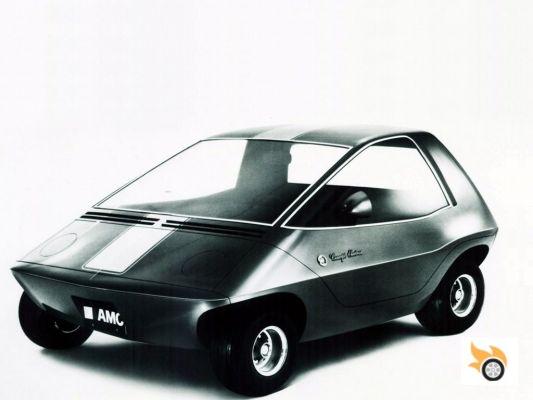
AMC Amitron, 1967
By the 1920s, gasoline had already become the automotive industry's preferred method of energy, something that World War II would only serve to reaffirm. That, coupled with the paradigm shift in the way cars were driven by pedals, meant that electric cars virtually disappeared from the manufacturers' production intentions.
Until transistor electronics arrived to radically change the world. At first only through computers, but soon it began to co-relate with the automobile.
As part of a program to develop new, more efficient and less polluting vehicles, with state aid, AMC, the American Motors Corporation, developed a prototype called the Amitron.
It was an electric vehicle designed to move around the city, with two batteries of different types, to manage fast and slow energy demands and allow a range of up to 240 kilometers between recharges. Weighing only 500 kilos, it was really light for its range.
Thanks to the electronic control, the Amitron allowed to have a progressive throttle and a regenerative braking system, supported by friction braking. The electronic system was in charge of managing the transition between both braking modes in a satisfactory way, effectively recovering part of the vehicle's kinetic energy and returning it to the batteries.
The problem for the promising project arose from the suspension of government subsidies for this type of project, which made it unprofitable for AMC to pursue a production version.
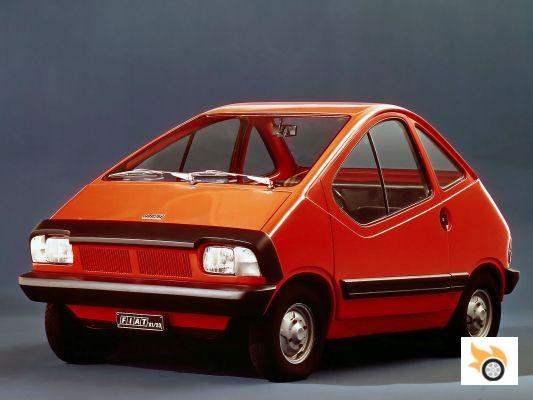
Fiat X1/23, 1972
Shortly before the oil crisis broke out, Fiat presented an innovative study of a strange electric car, similar in some respects to the AMC Amitron. It was a completely transistorised electric car, with a range of 80 kilometres and a top speed of 90 km/h, thanks to nickel-zinc batteries.
Unlike the Amitron, the X1/23 was a product much closer to production reality, with plastic materials making up its bodywork. The idea was to have a car equivalent to the Fiat Nuova 500, but purely electric.
In terms of regenerative braking, as the AMC Amitron already did, the X1/23 used a fully electronic system that allowed modulating the amount of braking torque that the electric generator would deliver in order to send electrons to the battery before the friction braking came into action.
Unfortunately, the project never got beyond the testing phase.

GM EV1, 1996
In 1990 General Motors presented its all-electric vehicle project. After a working interim prototype in 1994, the car was launched commercially in 1996.
The GM EV1 marked the return of the idea of a commercially viable, all-electric vehicle. Following experiments by Fiat and AMC, the EV1 was the first car produced in any volume to integrate a braking system that blended regenerative and friction braking, activated by a single pedal.
With 140 horsepower and a range between recharges of 260 kilometers in its version with nickel-metal hydride batteries,
Ultimately, you know, the project was a failure. The billion-dollar investment in the development of the car could not be compensated by leasing the vehicles, and the marketing of the vehicles could not satisfy the economic return necessary to launch the car on the market with a competitive price.
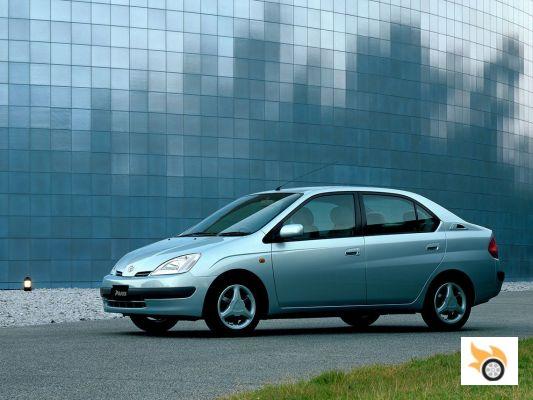
The little hybrid revolution
In 1997 Toyota launched the Prius on the Japanese market, and became the pioneer of a technology that, in reality, had been around for a long time, as you have already seen.
The hybrid revolution consisted exactly in the massive application of brake energy recovery technologies. These cars, the Prius, the Insight, the Lexus that came later, became much more energy efficient simply by recovering the kinetic energy of the car under braking and storing it in the batteries for acceleration.
Technological progress gradually allowed more capable batteries to be fitted, allowing more energy to be captured under braking so as not to run out of boost support on steep hills, mountain passes and so on.
Future for ERS
But the most surprising thing about the integration of brake energy recovery systems is not in the past. In the 100 years of automotive history behind us, it is only in the last two decades that we have seen any real interest in employing and developing brake energy recovery systems.
The idea of Toyota and Honda at their launch was to seek differentiation and ecology in the eyes of the public, but the hybrid future is not going to be influenced by fashions, but by legal obligations.
The emissions regulations that we will have in Europe in 2020, with average emissions of 95 grams of CO2 per kilometre driven (average homologated consumption of 4.1 litres per 100 kilometres) together with the new methodologies for measuring consumption using much more demanding cycles will mean that practically all the cars on the market will end up having some kind of hybrid technology of greater or lesser size to recover kinetic energy when braking.
Why? For an obvious reason: recovering kinetic energy during braking is the most effective, profitable and sensible solution for making a huge leap forward in reducing fuel consumption and emissions.
Problems and advantages of ERS systems
But why haven't we seen a revolution in energy recovery systems in braking much earlier? Why hasn't the end customer put pressure on manufacturers to offer them to the market much earlier?
The problem, apart from the economic issue, of brake recuperation systems lies in the feel of the brake pedal. When a car has regenerative braking, it has to be mixed with friction braking. Since it's all controlled from the brake pedal, getting a single control to combine the two mechanisms is actually quite a big engineering problem.
When we lift the accelerator pedal, a car with regenerative braking can leave the engine in neutral, while acting as an engine brake for some of that regenerative capacity. When we step on the brake, the first part of its travel activates even more regenerative braking power, until, when we step on it even more, the demand for braking torque is such that the car has to resort to using frictional braking, through the discs and pads.
In cars, unlike other means of transport such as trains, the feel of the brake pedal is vital to the perception of safety and control of the vehicle. We expect the effort required by the brake pedal to be exponential (harder the lower you go), but with no sudden bumps or changes in hardness through its travel. Furthermore, we always expect the same amount of travel for the same braking demand.
The mixture of regenerative braking systems with traditional friction braking makes it extremely difficult to achieve this feel with a purely mechanical system. This is why all hybrids have problems with brake feel.
The solution to the problem would be to integrate a fully electronic brake pedal, like the accelerator, with "force feedback", that is, with a response of resistance to being stepped on that would inform us of the braking effort we are executing. But the brakes "by wire", fully electronic, failed at Mercedes-Benz, with the Servotronic, and have been slow to be tried again (the Giulia Quadrifoglio is going to reintroduce them to the market).
In the racing world, both in Formula 1 and in the WEC (Le Mans), cars already use electronic brakes, to manage the problem of brake feel and regenerative braking torque control. But it wasn't easy in racing either, and drivers like Kimi Raikkonen still lament the loss of brake pedal feedback.
Interestingly, one of the greatest modern technological heresies is that the McLaren P1, being a hybrid car, lacks regenerative braking activated by the left pedal, for fear on the part of its manufacturer that the feel of the brake pedal would become too "dirty".
But of course, solving this problem in the feel and progression of the brake pedal, as well as massifying the installation of ERS systems has a prize: You can achieve reductions in consumption (efficiency gains) of up to 45%. We are talking about reducing the actual fuel consumption of a vehicle by almost half. This may not be relevant to a certain level of customers, but with the oil prices and regulations to come, the massive irruption of these systems, either integrated in hybrids or through their use in purely electric vehicles, is inevitable.
Types of ERS systems applicable to automobiles
But not all energy recovery systems in a car have to recover kinetic energy during braking. We can classify the braking energy recovery systems into three main groups, and in turn they can be further developed into different typologies. Let's take a look at them.
By KERS we mean all systems that are responsible for recovering kinetic energy from the vehicle and storing it. They can be of various mechanical types, but I am going to present four.
1.1. KERS by elastomers
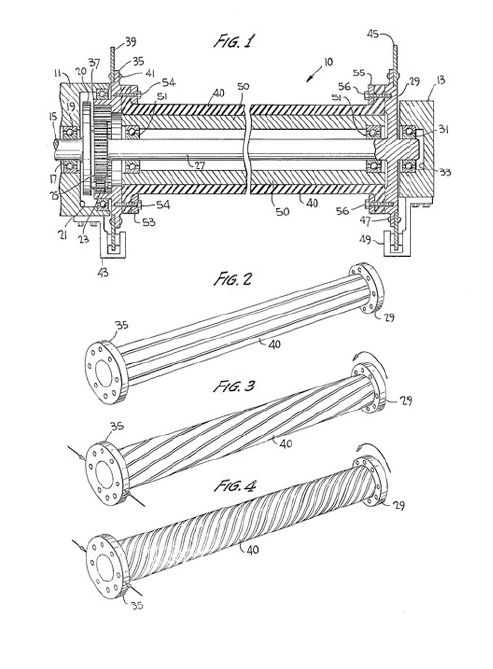
This system is associated with the wheels during braking and what it does is, through a continuous variator transmission, capture the kinetic energy of the vehicle to twist some strips of rubber on others, in the same way that rubber airplanes do (sure you know them).
When the car accelerates, the variator reverses its operation and provides that energy to the wheels.
In prototype tests, systems of this type offer the capacity to store up to 30 kJ and fuel consumption reductions of up to 15%.
This type of device has been patented since 1984, but has never gone into production.
1.2. KERS by hydraulic or pneumatic systems
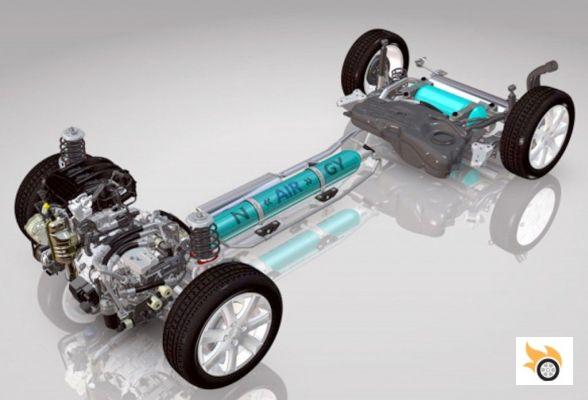
The famous PSA system, the "HybridAir", compresses air by taking energy from the wheels, converting the kinetic energy of the vehicle into compressed air. Then, when accelerating, simply reverse the process, using the compressed air to move a turbine and directing that energy to the wheels to recover the stored energy.
It is clearly cheaper and lighter than an electric KERS system, but it takes up a lot of space and requires two tanks, one high-pressure and one low-pressure.
PSA has abandoned it as a project because of the associated legislative problems. While it is true that governments are prioritizing the reduction of CO2 emissions, government aid is going towards electrified vehicles, which would leave vehicles with pneumatic kinetic energy harvesting systems without purchase aid equivalent to their rivals in the market.
In the laboratory and prototypes, these systems can store up to 90 kJ, reducing fuel consumption by up to 35%, especially on urban journeys.
1.3. Flywheel KERS
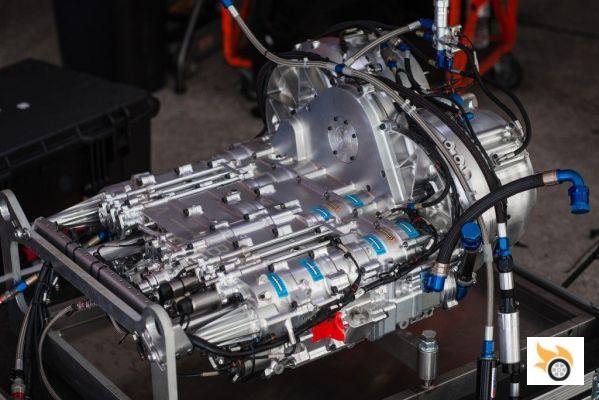
These will be more familiar to you, because we have already dedicated reports to them in Pistonudos (you can read the one about how the GT-R KERS works in Le Mans here).
The idea is to have a heavy wheel in a vacuum-packed box. When the car brakes, part of its kinetic energy is captured by spinning that heavy wheel at very high speeds. The wheel spins with virtually no friction thanks to the fact that it operates in a sealed chamber.
This system is capable of storing up to 580 kJ per wheel, and offers reductions in fuel consumption of up to 30%. In competition it was first developed by Williams with a mixed system (an electric generator captured the movement of the wheels, the electrical energy was converted back into mechanical with a motor that turned the flywheel) and then was licensed by firms such as Porsche (911 GT3 RSR Hybrid) and Audi (R18 e-tron) for use in endurance racing.
Nissan opted for a purely mechanical system for the GT-R LM Nismo, but failed to make it competitive.
For production vehicles, both Volvo and Jaguar have tested versions of this technology, without going into mass production.
1.4. Electric KERS
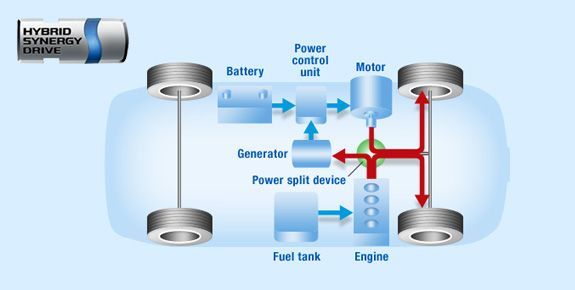
The most widespread system consists of an electric motor-generator that converts the kinetic energy of the vehicle into an electrical charge that can be stored in various types of batteries or capacitors for use at another time.
The hybrid systems of Toyota, BMW or Honda, for example, are based on this technology, which offers great energy storage capacities, with consumption reductions of up to 40% on urban routes.
In addition to hybrids with "full-size" electric KERS technology, micro hybrids employ a similar principle, using the car engine's electric generator selectively when the driver lifts the accelerator pedal and charging the battery at that moment, offering fuel consumption improvements of up to 4%.
2. Recovering kinetic energy from body oscillations
When a car is on the road, the suspension allows the body to maintain a stable motion while the wheels move relative to it to adjust to bumps and irregularities in the road.
From this relative movement between the wheels and the body, energy can be recovered and stored in batteries. There are two different technologies for this purpose.
2.1. Active suspension
Active suspension uses linear electric motors to constantly modify the position of the wheels relative to the body, contracting or extending them to adapt to the road surface and maximize control.
This type of suspension, developed by Bose and Lotus in different projects, needs a calculator that is able to "read the road" to anticipate the needs and modify its geometry.
Well, these linear actuators that give it life, when they work with passive and not active movement, generate electricity, and this electricity can imply, depending on the state of the road, reductions in consumption of up to 10%.
2.2. Regenerative damping
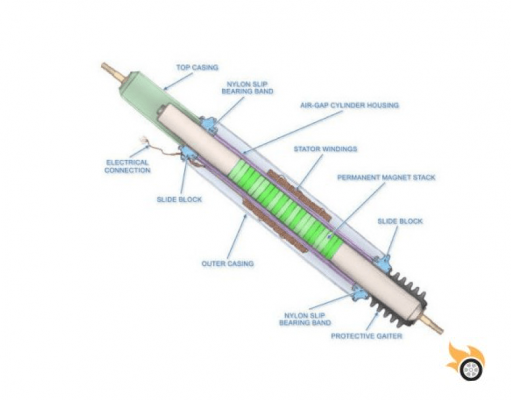
If the suspension is not active but you want to take advantage of this same effect, you can integrate motors with small linear electric generators that replace the conventional hydraulic fluid found in the damping with magnetic fields.
These magnetic fields absorb the energy of the wheel movements (bumps and spring movement) to capture energy that allows consumption reductions that are, in prototypes, between 2% and 10%, depending on the state of the road.
Neither of these two regenerative suspension systems is in use today, but they should not be long in coming when the need to maximize vehicle efficiency becomes greater.
3. Energy recovery from combustion engine exhaust gases
If the car's main generator of motion is a combustion engine, the exhaust gases can always be harnessed for energy extraction and reuse.
It is worth remembering that the ideal state of the exhaust gases would be air with zero velocity and the same temperature it had when it was absorbed by the engine, something that is impossible in reality.
The fact is that we are still far from the technical limit possible when it comes to extracting energy from the exhaust gases in any case.
3.1. Thermal recovery of exhaust gases
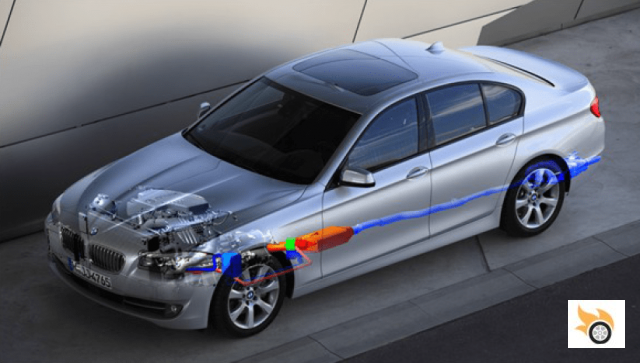
One principle for extracting energy from exhaust gases is to extract energy from their temperature difference with the ambient temperature.
This can be done by two processes. One is to use heat-activated electrical generators, which generate electricity directly if a temperature differential is applied to them.
The other system involves using a Rankine cycle, heating a liquid until it evaporates with the exhaust gases and extracting the energy from the vapour in a turbine until it condenses again and repeats the cycle.
BMW has developed prototypes of both systems that will be ready to market between 2017 and 2018. Pure electric heat generators offer consumption improvements of 10%, while Rankine cycles offer up to a 15% reduction in fuel consumption.
3.2.Kinetic energy recovery from exhaust gases
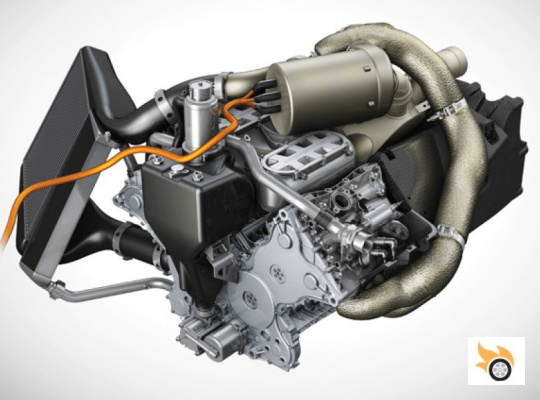
Finally, I am going to talk about the energy recovery of the exhaust gases from the exhaust gas velocity. The exhaust gases, if you brake them with a turbine, generate work on the turbine shaft.
This principle is used by turbochargers to improve the performance of combustion engines. But even after passing through a turbocharger, exhaust gases still store energy that can be harnessed in an electric generator activated by a turbine interposed in the exhaust stream.
These generator systems can in fact be directly coupled to the turbochargers, interposing an electric generator between the turbine and the turbo compressor and using a larger turbine.
These solutions are already used in Formula 1 (with a mixed mechatronic turbocharger) and at Le Mans (Porsche 919, with a generator independent of the turbocharger, with variable geometry).
Conclusions
The curious thing about all this analysis of technologies is to see how, as I mentioned at the beginning of the article, by combining one technology from each of the three groups presented, we could obtain savings in fuel consumption of more than 50%.
The problem is the cost. Manufacturers have not invested so far in these technologies because legislation has not forced them to reduce consumption to the level of conventional combustion technology.
It is now when, in view of the consumption and emissions that we will have to homologate in 2020, there will be no choice but to start betting on this technology.
Another issue is cost. Integrating more technologies into existing cars is always more expensive. The application of energy recovery systems is more effective and profitable in purely electric cars, as they already have batteries to use them as energy storage systems, but the problem of electric vehicles has already been discussed on other occasions.
Be that as it may, get ready, the revolution of energy recovery in the automobile has only just begun, and we have been at it for more than 100 years.

























